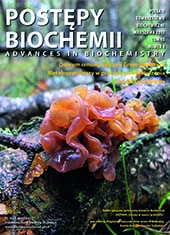Biologically active compounds and methods of their removal through biocatalysis
Abstract
Pharmaceuticals and other biologically active substances are produced in increasing numbers. Because of increased usage and improper storage, they pass into surface water, ground water and drinking water directly or through wastewaters. This is a threat to many living organisms, including humans, because of hormonal imbalances primarily related to reproductive processes or the problem of microbial drug resistance. Due to the scale of the emission and limited possibilities of decomposition of these pollutants by physico-chemical methods it is necessary to develop new efficient processes. One of the proposed solutions is the use of tools offered by biocatalysis. Thanks to the biocatalysis process, a wide range of biologically active compounds can be removed, by using of enzymes with low substrate specificity and operating in environmentally friendly conditions. Recent studies indicate the effectiveness of those methods used in the removal of pollutants of different chemical structure, with the formation of non-toxic metabolites.
Downloads
Published
Issue
Section
License
All journal contents are distributed under the Creative Commons Attribution-ShareAlike 4.0 International (CC BY-SA 4.0) license. Everybody may use the content following terms: Attribution — You must give appropriate credit, provide a link to the license, and indicate if changes were made, ShareAlike — If you remix, transform, or build upon the material, you must distribute your contributions under the same license as the original. There are no additional restrictions — You may not apply legal terms or technological measures that legally restrict others from doing anything the license permits.
Copyright for all published papers © stays with the authors.
Copyright for the journal: © Polish Biochemical Society.




